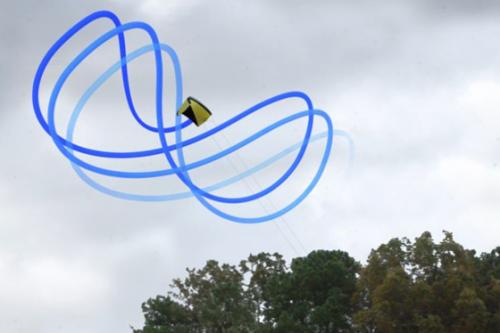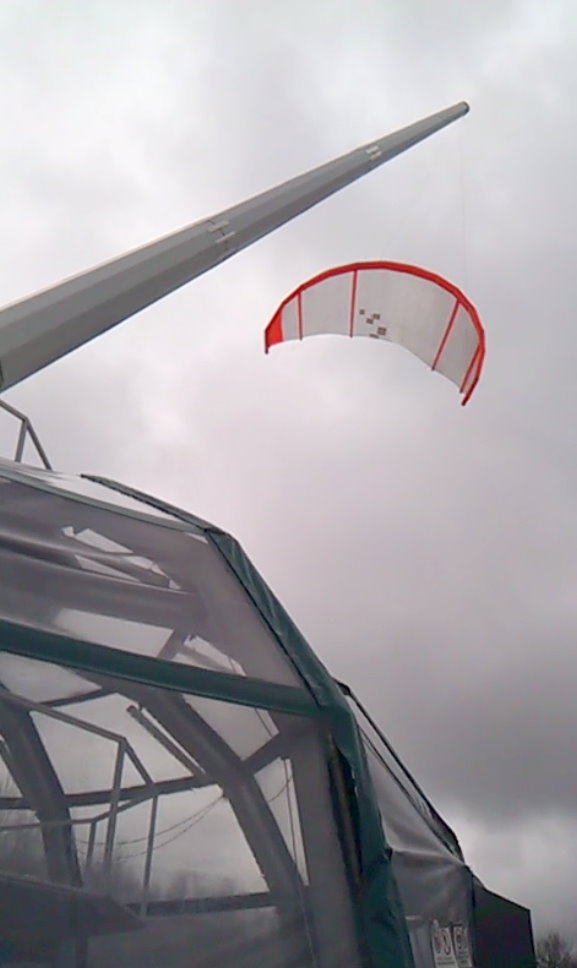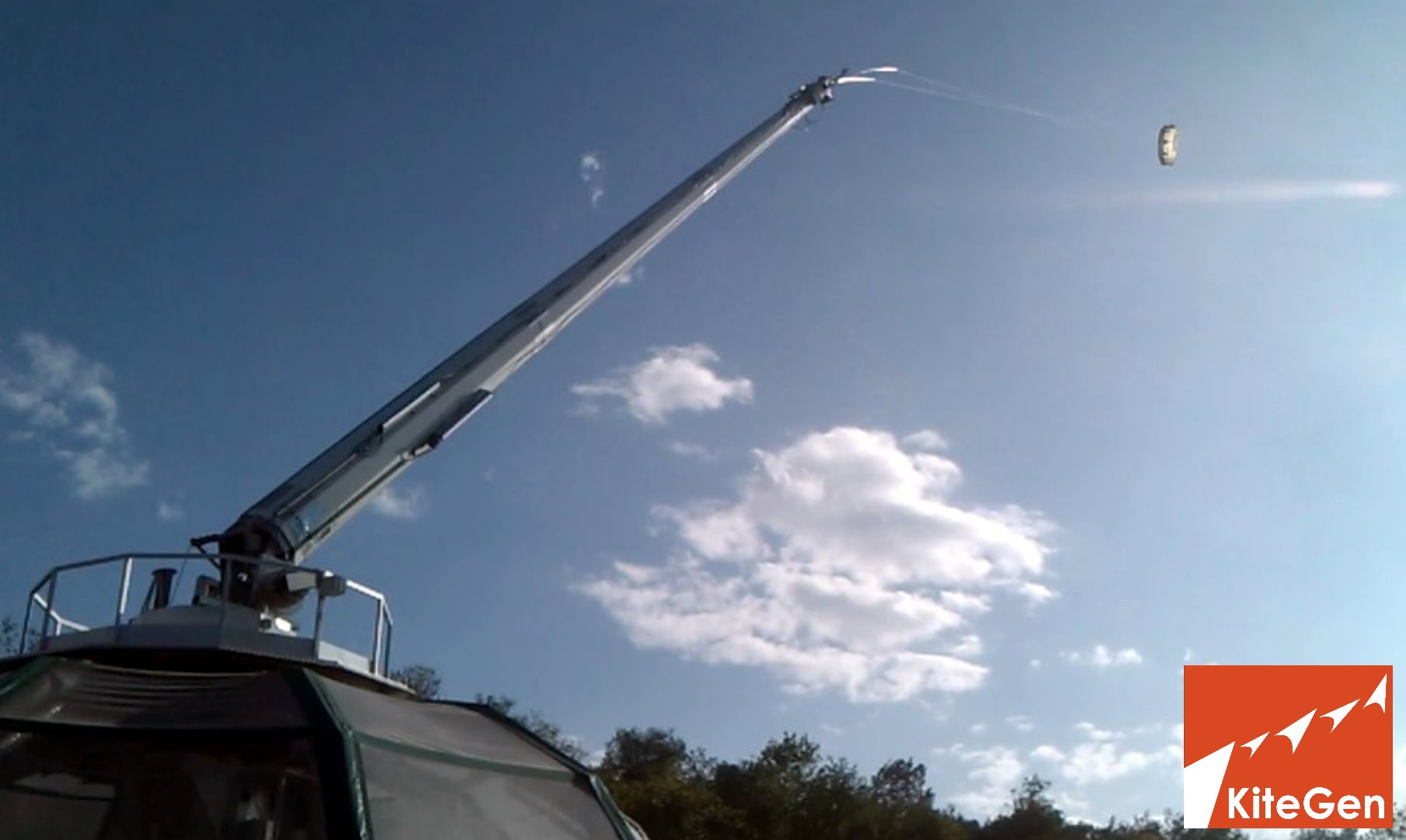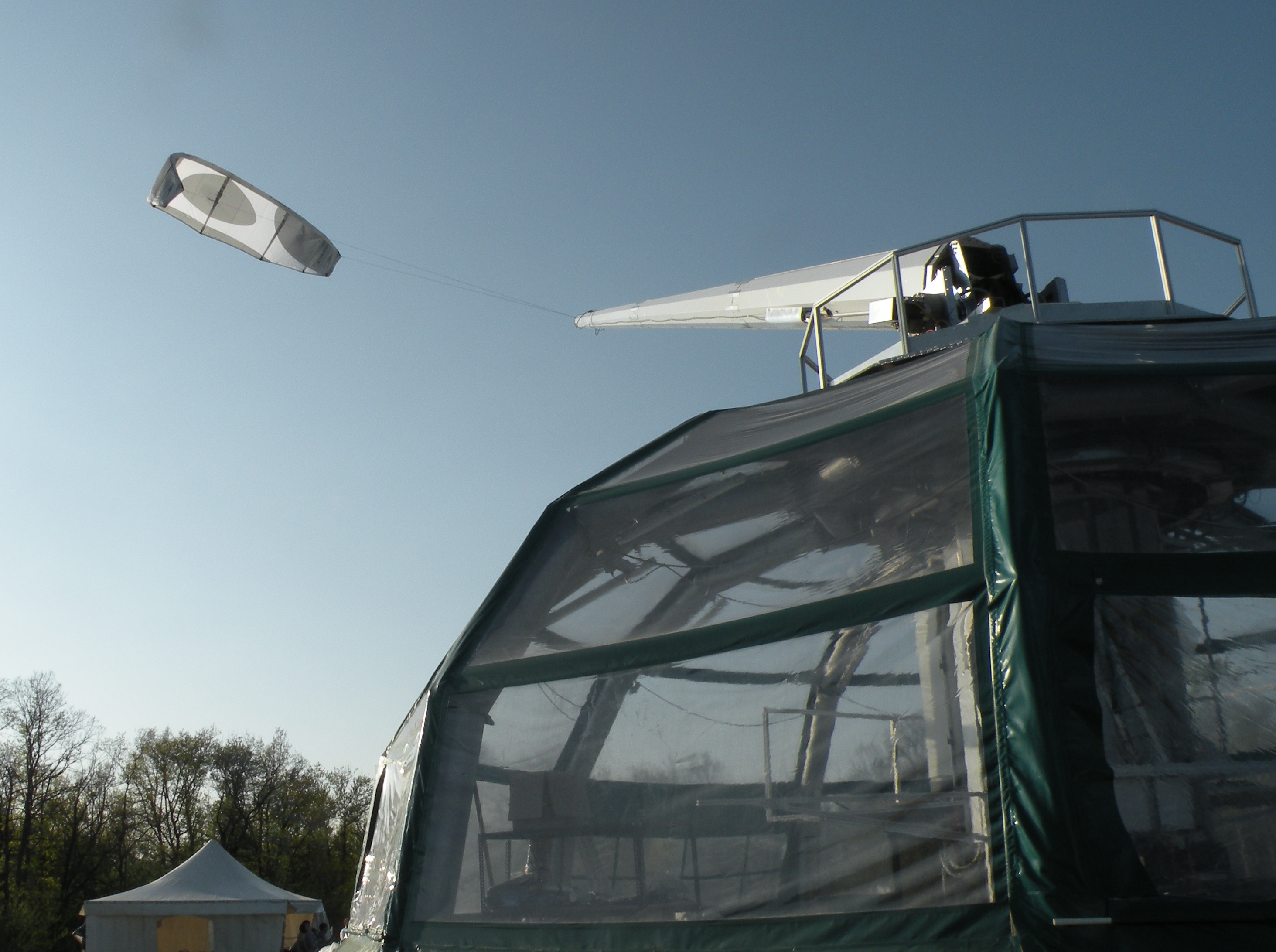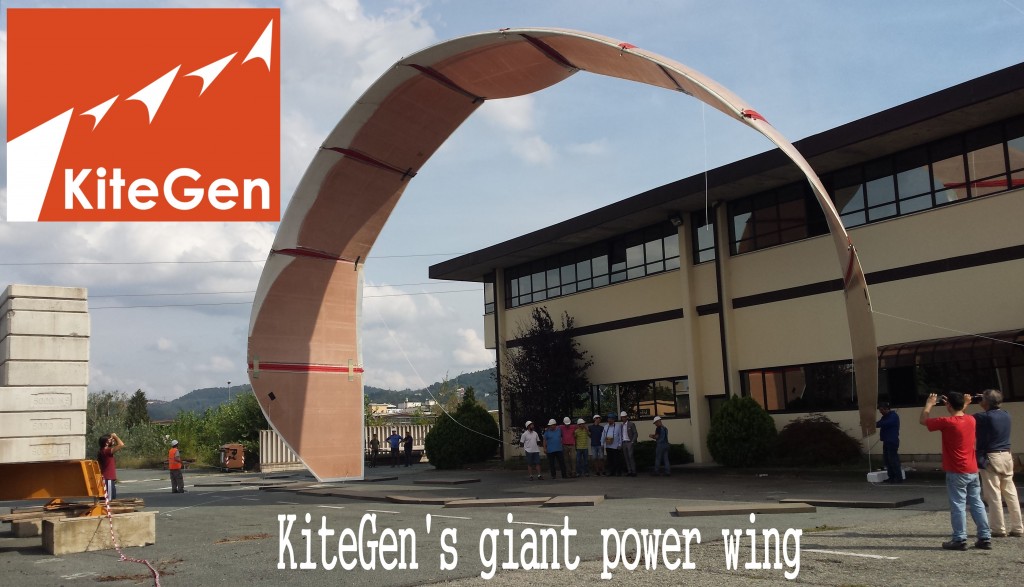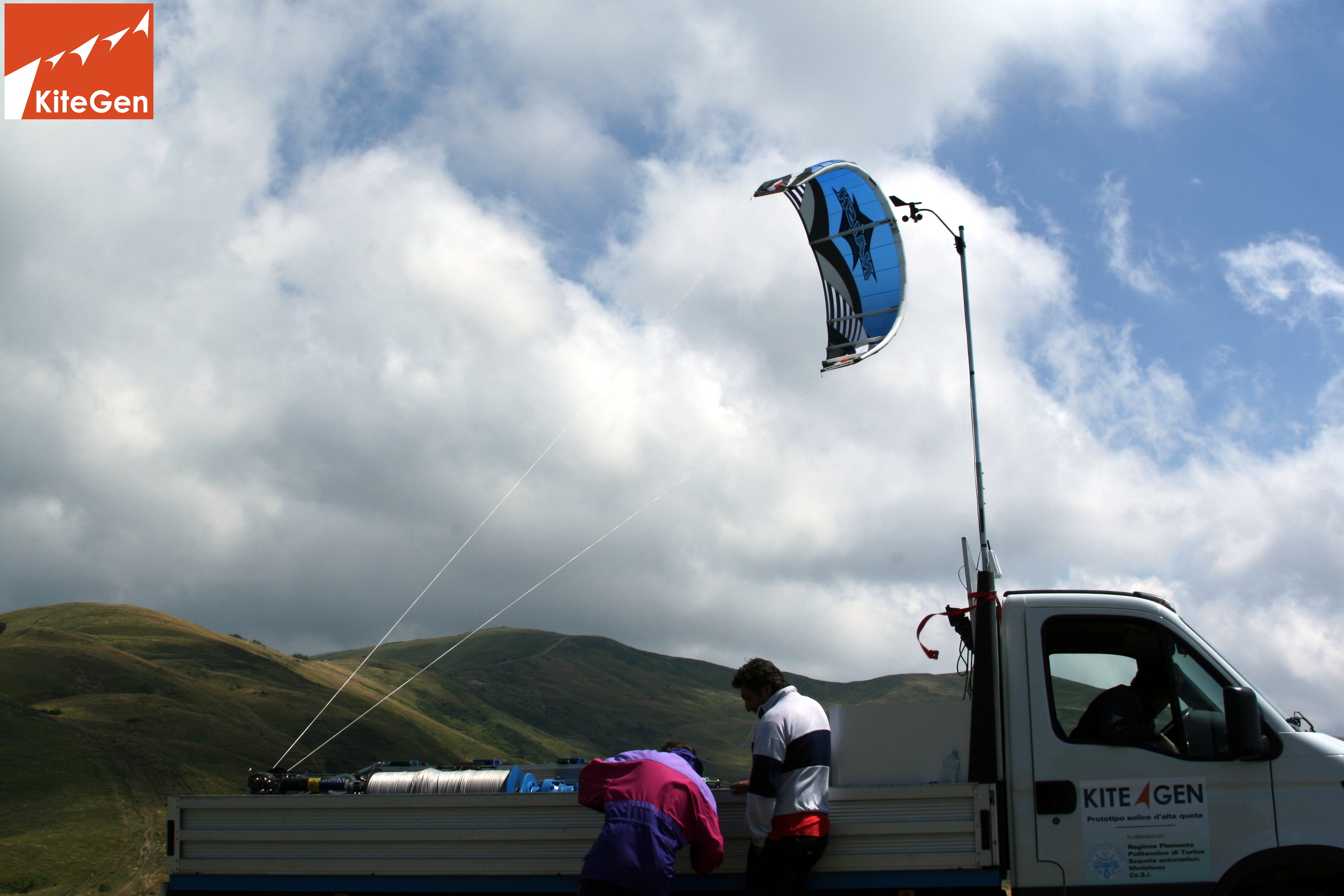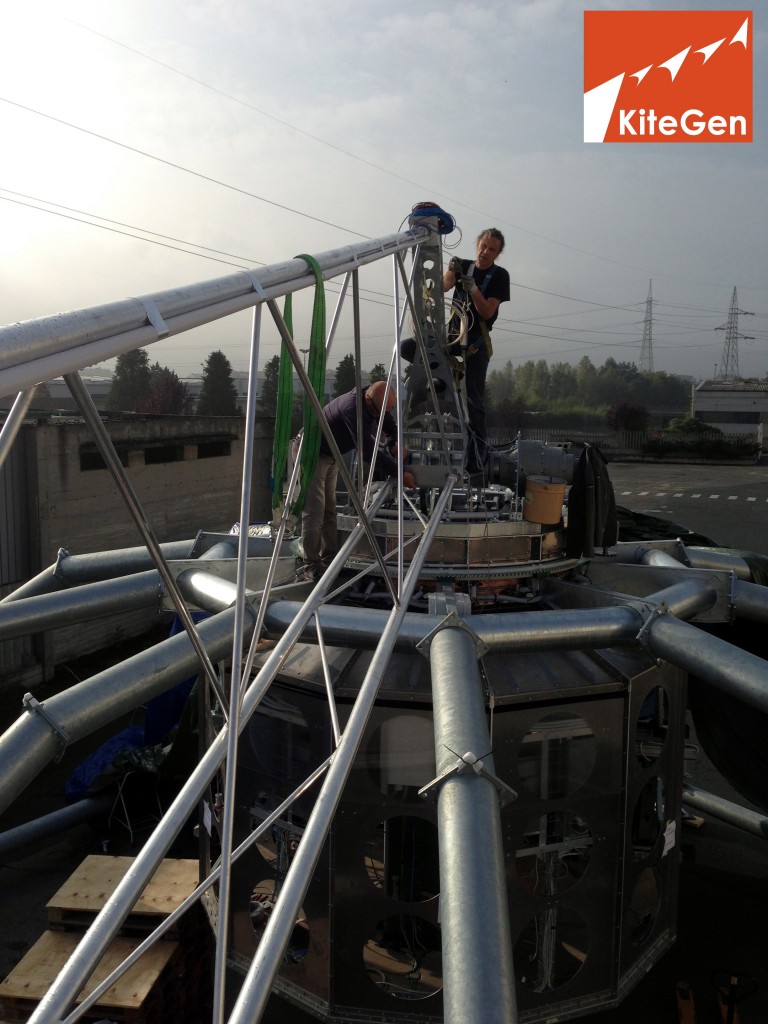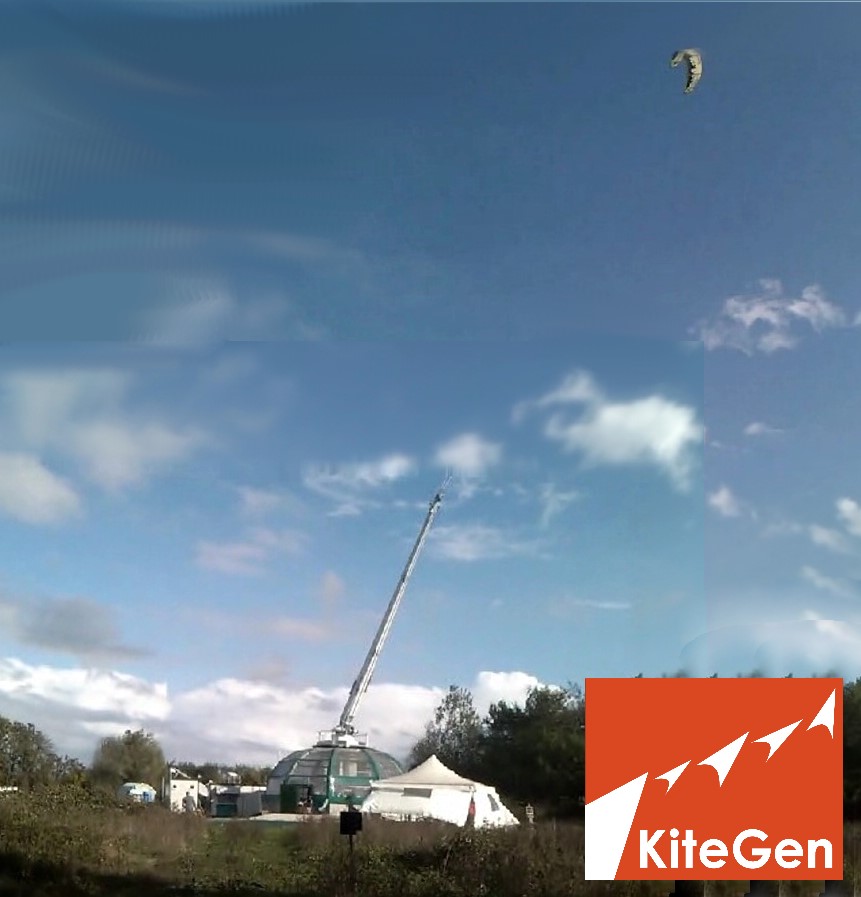High Altitude Wind Energy from David North’s (NASA) point of view
Image credit phis.org: The system developed at Langley flies a kite in a figure-8 pattern to power a generator on the ground
Originally written by Andrea Papini and Eugenio Saraceno
As our readers already know, one of the most titled teams that recently joined the at high altitude wind energy sector is that of NASA, which at the Langley Research Center in Virginia is developing its own project. According to David North, engineer of the team, in an article reported by phis.org:
“most tower turbines are about 80 to 100 meters (roughly 300 feet) high, which is pathetically down in the boundary layer of Earth. The boundary layer is where friction from Earth’s surface keeps the wind relatively slow and turbulent. The sweet spot for wind energy starts around 2000 feet up (600m). To use wind at that altitude to generate electricity, you’d have to build a turbine tower taller than the Empire State Building. Or you can fly a kite.”
Read more at: http://phys.org/news/2012-07-electricity-air.html#jCp. ”
Or the older article about the early stage of the NASA research http://phys.org/news/2010-12-green-energy-air.html#nRlv
The Langley Research Center is the only one, so far, who has also left also the sensors on ground. This choice derives from extreme simplification of the flight control, possible due to awareness of not having to create a commercial product yet. In essence the kite is “observed” by a special camera which communicates to a control system based on a shape recognition technology, similar to those adopted by some recent video games with which they can interact by means of the movements of the body (eg MS Kinetics).
We can say that lately, as well as KiteGen, other groups have reported being able to run the automatic control of the kite:
NASA Langley (in March).
TuDelft (In June)
( plus at least 5 other groups who are still working on that)
However, only KiteGen and SkySails are now able to perform take-off and landing automatically.
We are pleased to note that some of the concepts on which KiteGen is been insisting for years, are now being repeated by NASA:
- Flying the kite only reduces the weight (and therefore the cost) of the generator;
- Flying only the tip of the existing wind turbines, which are the parts of the blades that produce 90% of the total energy.
- The power depends on the cube of speed, and therefore it is better to have more efficient kites/wings (contrary to what is being developed by SkySails so far).
Related post ( March 2012)
